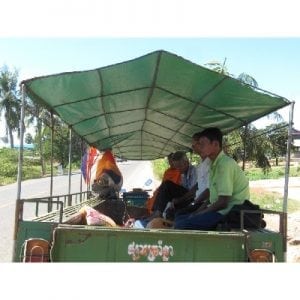
Agriculture
January 19, 2024
Clean Team Toilet and Clean Team Toilet Waste Management Service
Read SolutionImplemented by
Clean Team Ghana

Updated on January 17, 2024
·Created on May 20, 2016
Sanima (former X-Runner) provides subscribers a urine-diverting dry toilet with waste collection services.
Sanima is a waste management service (former X-Runner) for low-income households seeking a sustainable and hygienic sanitation solution. A urine diverting dry toilet and waste collection service are provided for a monthly fee. Sanima delivers and installs the toilet, while waste is collected weekly by the brand Family’s. Collected waste is composted at an off-site facility and used to enrich soils.
Target SDGs
SDG 6: Clean Water and Sanitation
Market Suggested Retail Price
$13.00
Target Users (Target Impact Group)
Household
Distributors / Implementing Organizations
Sanima
Competitive Landscape
Countries
Peru
Manufacturing/Building Method
Separett waterless, urine diverting toilets are provided to Sanima subscribers. Separett toilets are manufactured in Sweden and imported to Peru. Installation includes attaching the toilet to a wall or floor and routing the ventilation pipe outdoors.
Intellectural Property Type
Select Type
User Provision Model
Users can purchase subscriptions directly through Sanima in Lima, Peru.
Distributions to Date Status
X-Runner (now Sanima) has 180 household customers, reaching more than 2000 people with sanitation services (2015)
Toilet type
Container-based service
Evacuation method
Dry
Storage conditions
Container storage
Capacity (L)
23 L
Time until emptying
Weekly collection frequency
Design Specifications
Separett toilet specifications: Material - Impact-resistant high-gloss polypropylene, recyclable; Inner container - 23 litres Polypropylene; Vent pipe - 40 cm (Ø75 mm); 2 m white hose for urine waste (Ø32 mm)
X-Runner (now Sanima) processes solid waste at an offsite composting facility. Pathogens are removed using thermophilic composting and Efficient Microorganisms to speed up the traditionally time intensive composting treatment method.
Technical Support
Unknown
Replacement Components
Solid waste containers, lids, and compostable waste bags are available.
Lifecycle
Unknown
Manufacturer Specified Performance Parameters
Environmental: The dry toilet consumes an average of 84 litres per year, which is very low compared to the 9'450 litres of a pit latrine and with a minimum of 31'104 litres that a WC flushes down the drain. Furthermore, the least amount of water is used
during the service operations.
Health: 4 months after using the xrunner toilet there is an average reduction of 12% of diarrheal episodes.
Financial: X-runner’s customers (and potential customers) spend between US$ 7 and US$ 12 every time they suffer from acute diarrhea episodes. In addition, these diseases cost 2 days of work productivity or 2 days of missed attendance at school.
Vetted Performance Status
According to external parasitological and microbiological analyses, fecal coliform concentrations in the compost meet Chilean and Austrian standards, meaning the compost is safe for use.
Safety
Not specified. Handling of waste requires protective equipment such as gloves and face-masks.
Complementary Technical Systems
X-Runner (now Sanima) uses NFC microchips for service process monitoring. From the data, staff can assess in real-time whether there are any issues with the toilet, the payments, or the service.
Academic Research and References
Unknown
Compliance with regulations
Unknown
Evaluation methods
X-Runner (now Sanima) uses NFC microchips for service process monitoring. From the data, staff can assess in real-time whether there are any issues with the toilet, the payments, or the service. Evaluation methods for solid waste treatment and pathogen removal are not specified

Agriculture
January 19, 2024
Implemented by
Clean Team Ghana

Agriculture
August 17, 2024
Implemented by
Sanergy

Agriculture
January 22, 2024
Implemented by
Sanivation

Agriculture
August 4, 2024
Implemented by
Partners for Development Taxi Service

Agriculture
June 25, 2024
Implemented by
MIMU

Agriculture
February 15, 2024
Implemented by
HemoCue

Agriculture
June 29, 2024

Agriculture
June 26, 2024
Implemented by
Helmholtz Centre for Infection Research (HZI)

Agriculture
January 10, 2024
Implemented by
Professor D.J. Picken

Agriculture
February 3, 2024
Implemented by
Greenpact
Have thoughts on how we can improve?
Give Us Feedback
Emily says:
Capacity (liters): 25 L for urine, 30 L for feces (source: Sustainable Sanitation Alliance (SuSanA) Secretariat visit to Sanergy sites, https://www.flickr.com/phot…